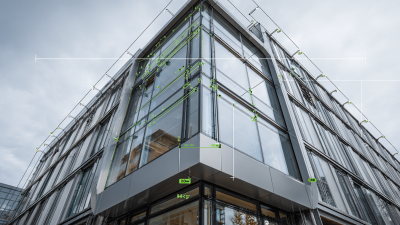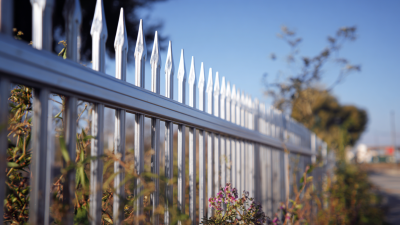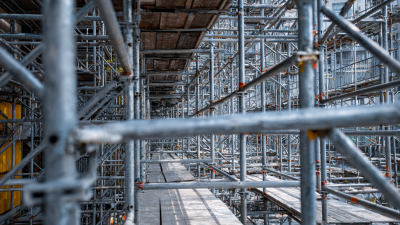In the realm of contemporary architecture, the interplay between aesthetics and functionality is increasingly pivotal, leading to a surge in the demand for innovative materials. Facade Aluminium Profiles stand at the forefront of this evolution, offering architects a versatile solution that blends sleek design with durability. These profiles not only enhance the visual appeal of modern buildings but also contribute to energy efficiency and sustainability. As urban environments continue to evolve, the role of facade design becomes paramount in creating striking impressions while adhering to practical needs. This exploration delves into the multifaceted advantages of using Facade Aluminium Profiles, highlighting their essential role in shaping the future of architectural designs that marry performance with creative expression.

Aluminium profiles have become a fundamental element in modern architectural aesthetics, offering both functionality and visual appeal. These profiles enable architects to create sleek, smooth lines that enhance the overall look of contemporary buildings. Their lightweight nature allows for innovative shapes and configurations, facilitating the integration of large glass panels that blur the boundaries between interior and exterior spaces. With a variety of finishes and colors, aluminium profiles can be tailored to suit diverse design themes, making them a versatile choice for any architectural project.
**Tip:** When selecting aluminium profiles, consider the thermal performance and the environmental impact of your materials. Opting for profiles with thermal breaks can improve energy efficiency, while choosing recycled materials contributes to sustainability.
The role of aluminium profiles extends beyond aesthetics; they also provide crucial structural support. By leveraging the strength of aluminium, designers can create expansive facades that stand up to the elements without compromising safety. The ability to incorporate various design features, such as integrated lighting or shading devices, allows architects to push creative boundaries while enhancing functionality.
**Tip:** Always consult with structural engineers to ensure that the chosen aluminium profiles will meet the specific load and wind resistance requirements of your design, ensuring safety without sacrificing style.
 Innovative aluminium facade profiles play a crucial role in modern architectural designs, offering a range of benefits that enhance both aesthetics and functionality. One key advantage is their lightweight yet durable nature, which allows architects to exploit unique shapes and sizes without compromising structural integrity. This flexibility enables the creation of dynamic building exteriors that not only catch the eye but also respond to various environmental stimuli, such as light and weather conditions.
Innovative aluminium facade profiles play a crucial role in modern architectural designs, offering a range of benefits that enhance both aesthetics and functionality. One key advantage is their lightweight yet durable nature, which allows architects to exploit unique shapes and sizes without compromising structural integrity. This flexibility enables the creation of dynamic building exteriors that not only catch the eye but also respond to various environmental stimuli, such as light and weather conditions.
Additionally, these aluminium profiles contribute significantly to energy efficiency in construction. Their ability to incorporate advanced insulation technologies helps regulate building temperatures, reducing the reliance on heating and cooling systems. This not only leads to lower energy costs over time but also aligns with sustainable building practices, addressing the growing need for eco-friendly solutions in architecture.
With their combination of style and performance, innovative aluminium facade profiles are redefining the possibilities of contemporary building design.
In modern architectural design, sustainability has emerged as a key consideration, particularly with the growing implementation of aluminum facades. According to the Aluminum Association, aluminum is one of the most sustainable building materials available, boasting a recycling rate of over 75%. This not only reduces the demand for raw materials but also significantly lowers the environmental impact, offering architects a responsible choice for contemporary designs. The energy efficiency delivered by aluminum facades also plays a crucial role; buildings clad in aluminum can reduce energy consumption by up to 30% through improved insulation and reflective properties.
Tips for selecting aluminum profiles include prioritizing those with high thermal efficiency ratings and ensuring they are sourced from manufacturers who utilize solar energy in their production processes. This enhances not only the building’s sustainability but also its overall aesthetic appeal. Additionally, consider incorporating modular designs that allow for easy upgrades and modifications, extending the lifecycle of the facade while accommodating future design trends.
The impact of aluminum facades on urban environments is notable as well. A study from the International Aluminum Institute found that switching to aluminum facades can lead to a reduction in urban heat islands, improving local climates. Investing in innovative facade solutions not only benefits individual buildings but also contributes positively to community health and sustainability efforts.
The integration of innovative façade aluminium profiles with energy-efficient building solutions is a transformative trend in modern architecture. Reports from the Aluminium Association indicate that the use of aluminium in building facades can enhance thermal performance by up to 30%. This is largely attributed to the lightweight yet strong properties of aluminium, which allows for larger glazing areas without compromising structural integrity. The innovative design of aluminium profiles enables architects to create visually striking façades while ensuring optimal energy performance.

Moreover, energy-efficient building envelopes utilizing aluminium profiles are not just aesthetically pleasing but also contribute significantly to sustainability. A study published by the International Energy Agency highlights that buildings equipped with high-performance aluminium facades can reduce energy consumption for heating and cooling by 20-40%. By incorporating advanced thermal break systems and low-emissivity coatings, these profiles enhance thermal insulation, leading to decreased reliance on artificial heating and cooling systems, and subsequently lowering carbon footprints. As the architectural landscape evolves, the compatibility of aluminium profiles with energy-efficient strategies underscores the potential for a greener, more sustainable future in building design.
The advancement of aluminium facade design is significantly shaping modern architectural aesthetics in urban environments. Emerging trends indicate a shift towards the use of innovative aluminium profiles that not only enhance structural integrity but also address sustainability concerns. Architects are increasingly incorporating these lightweight, durable materials to create dynamic and visually striking facades that reflect the surrounding urban landscape. The ability to customize profiles allows for greater flexibility in design, enabling architects to explore unique shapes and configurations that break traditional norms.
In addition to aesthetic benefits, data insights reveal that modern aluminium facades contribute to energy efficiency and environmental sustainability. Through the integration of smart technologies, architects can use data-driven approaches to optimize building performance. These technologies facilitate better thermal insulation and sunlight control, substantially reducing the energy required for heating and cooling. As cities continue to grow, the demand for innovative, efficient, and visually appealing facade designs will only increase, showcasing the vital role of aluminium profiles in the future of urban architecture.






